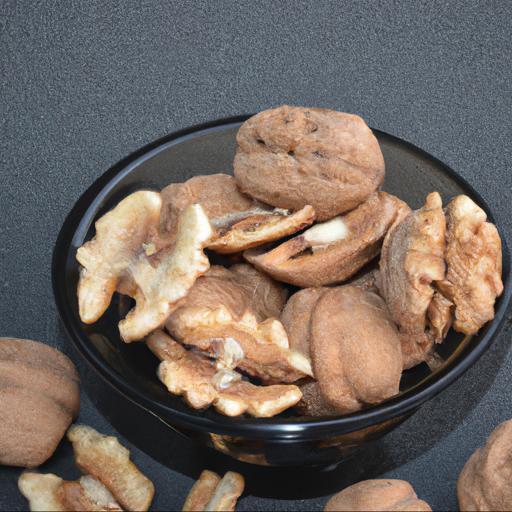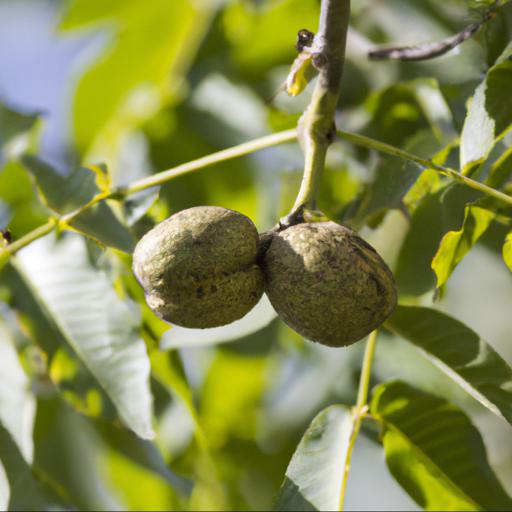The Juglans regia, commonly known as the English walnut, is a species of tree native to the Middle East and Central Asia. This tree is renowned for its delicious nuts, which have been used as a food source for centuries. The wood of the Juglans regia is also highly prized, and is used to make furniture, musical instruments, and other items.
This species is also a great ornamental tree, with its attractive foliage and fragrant flowers. In this blog, we will discuss the many benefits of Juglans regia, from its edible nuts to its woodworking potential.
We’ll also explore the history of this species and its uses in traditional medicine. So, if you’re looking for a tree that offers both beauty and practicality, the English walnut may be the perfect choice.
Nutritional benefits of juglans regia

,Juglans regia is a type of walnut tree native to the Caucasus, the Middle East and Central Asia. Although it is widely known for its nutritional properties, it offers a few other benefits as well.
This tree is not only a healthy food choice, but it is also an important part of your garden or landscape. One of the best things about planting a Juglans regia tree is that it is a relatively easy-to-care-for type of tree. It thrives in full sun and is drought-tolerant, which makes it a great addition to the yard.
The tree is also beautiful with its oval-shaped leaves and produces an array of fragrant, yellow-tinted flowers. When it comes to its nutritional benefits, Juglans regia nuts are an excellent source of essential vitamins and minerals.
They contain a variety of nutrients including magnesium, calcium, iron, zinc, potassium, and phosphorus. Additionally, walnuts are packed with protein, healthy fatty acids, and antioxidants like ellagic acid. Eating a handful of Juglans regia nut meat a day can help protect you from a variety of diseases and promote heart health.
Walnuts are also a great way to add flavor to your meals. Crushing Juglans regia nuts and adding them to a salad or topping off a dessert with a few crushed walnuts gives your food an interesting flavor.
Plus, the crispy texture of the nuts adds a delightful crunch. Juglans regia are a fantastic addition to any garden, both for their aesthetic appeal and nutritional benefits. So why not plant a few of these trees in your home landscape today?
You’ll be able to reap the benefits of fresh walnuts, while simultaneously making your outdoor space look beautiful.
Health benefits of juglans regia

The health benefits of Juglans regia, also known as “walnuts, are vast and plentiful. As a tree native to Europe, North Africa, and Western and Central Asia, it has been used as a medicinal herb in many cultures throughout the centuries. It is well known for its nutty flavor and versatile culinary applications.
Its health benefits, however, go beyond flavor. Walnuts are rich in healthy fats, with slightly more than half of its fat content coming from healthy monounsaturated fats.
These fats help lower cholesterol and improve heart health. Additionally, walnuts are a great source of Omega-3 and Omega-6 essential fatty acids. Omega-3 fatty acids have been linked to improved cognitive function, cardiovascular protection, and even joint health.
Omega-6 fatty acids have been found to have an anti-inflammatory effect and can help reduce inflammation in the body. Walnuts are also loaded with vitamins, minerals, and other essential nutrients, including magnesium, fiber, phosphorous, potassium, and Vitamin E.
In addition to their nutritional benefits, walnuts are also known to have powerful antioxidant properties. These antioxidant compounds help protect the body from the damaging effects of free radicals – molecules which can build up in the body and cause cellular damage and inflammation.
Other health benefits credited to consumption of walnuts include improved metabolic health, better brain function and eye health, enhanced exercise performance, and even protection from certain types of cancer. All this from a small tree that can easily be grown in your backyard! Walnuts are not only delicious and nutritious, but more studies continue to show us the numerous health benefits that it is able to offer.
As a garden expert, I highly recommend adding a few walnut trees to your backyard paradise – and with a little love and care, you’ll reap the benefits in no time.
Uses of juglans regia

Juglans regia, commonly known as the English walnut or common walnut, is a versatile and beautiful tree that can be a great addition to gardens across the UK. Not only does it provide lovely visual appeal through its iconic shape, unique leaf structures and magnificent autumn colours, but its edible nuts are also widely considered a health food, due to the fact that they contain high amounts of antioxidants, minerals, fibre and vitamins.
Furthermore, the wood of Juglans regia has been used in furniture and woodworking tools for centuries, due to its strength and its relatively light weight, making it a great choice if you’re looking to create a beautiful art project. When planting a Juglans regia in your garden, one of the first things to consider is the soil type, as it is quite sensitive to soil pH. If your soil is too alkaline (above
2 on the pH scale) or too acidic (below 5 on the pH scale), this can have detrimental effects on the growth and development of the tree, with iron and magnesium deficiencies being the most common issues. Additionally, it’s important to give the young tree enough room to grow, as it can reach heights of up to 20m and live for hundreds of years.
Planting at least 3-4m away from any buildings, fences, walls and other trees would be ideal. As for care and maintenance of your Juglans regia, this will include regular watering, pruning, fertilising and pest control.
Generally speaking, regular watering is recommended in hotter and drier weather, and an annual dose of fertiliser will ensure the tree’s continued health. When it comes to pruning, it’s best to do it in small doses and never remove more than 1/3 of the crown of the tree, as this can have a disastrous effect on its health. Finally, pest control is important as walnut trees are prone to having problems with scale insects, aphids, borers and other pests.
All of these factors will help your tree grow strong, healthy and productive, and provide you with delicious walnuts, beautiful autumn colours and a gorgeous element to your garden year-round.
Growing and harvesting juglans regia
Growing and harvesting Juglans regia – A UK Garden Expert’s GuideFor gardeners in the UK, Juglans regia (more commonly known as the common walnut) provides a unique opportunity to grow a large and significant tree species in even the most limited of outdoor spaces. While walnuts are most associated with California in the United States, walnut trees can and will thrive in the British climate. As such, careful and knowledgeable gardening can result in a large and productive harvest of walnuts.
The first step to harvesting walnuts is planting the tree. Juglans regia should be planted in full sun, in a spot where it can receive 6-8 hours of direct sunlight each day.
Locate a spot that allows plenty of room for the tree to stretch out, as an adult walnut can reach heights of up to 25 metres, and often has a spread of up to 15 metres. Make sure to only purchase trees from nurseries selling bare root seedlings, as these have a greater chance of survival than those purchased in pots.
When considering when to harvest walnuts, ensure that the tree has been aged at least four or five years to ensure optimal production. While Juglans regia are hardy enough to bear fruit the first year of their life, it’s worth waiting for older trees, as the oldest trees typically offer the largest and greatest quantity of walnuts. In the UK, walnuts can typically be harvested starting in the fall, during September and October.
When it comes to harvesting, protect your body via the use of gloves, long clothing and even a face mask, as the husks – which will be covered in a sticky substance when mature – can cause skin irritation in some individuals. Once the nuts have been collected, they should be dried on a trampoline or other airing rack, and stored in a dry, airy space at room temperature.
For gardeners who lack the space or experience to take on walnut trees, luckily, the fresh nuts can be found in abundance online or through local farmers markets.
Our video recommendation
Final Touch
Juglans regia, commonly known as the English walnut, is a deciduous tree native to the region stretching from the Balkans to the Himalayas. It is a fast-growing tree that can reach heights of up to 30 meters and has been cultivated for centuries for its edible nuts, which are high in protein and healthy fats. The wood of the tree is also prized for its strength and durability, and is used in furniture, flooring, and other wood products.
Juglans regia is an important species for the environment, providing food and shelter to a wide range of wildlife.
FAQ
What is the scientific name of the walnut tree?
The scientific name of the walnut tree is Juglans regia.
What are the common uses of Juglans regia?
Common uses of Juglans regia include edible nuts, medicinal purposes, timber, and ornamental purposes.
What is the native range of Juglans regia?
The native range of Juglans regia is from southeastern Europe and southwestern Asia, from the Black Sea region eastward to the Himalayas.
What are the nutritional benefits of eating walnuts?
Walnuts are a great source of healthy fats, protein, fiber, vitamins, and minerals. They are also a good source of antioxidants, which can help protect against oxidative damage and reduce inflammation. Additionally, walnuts are rich in omega-3 fatty acids, which can help support heart health.
How long does it take for a walnut tree to reach maturity?
It typically takes a walnut tree between 4 and 10 years to reach maturity.
What are the environmental benefits of planting Juglans regia?
The environmental benefits of planting Juglans regia include providing habitat for wildlife, improving air quality, reducing soil erosion, and providing a source of food for birds and other animals. Additionally, the tree helps to reduce the urban heat island effect, absorb carbon dioxide, and provide shade and shelter.

